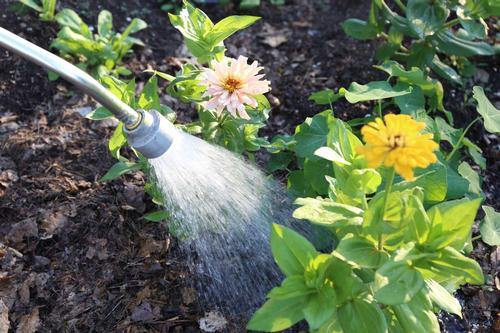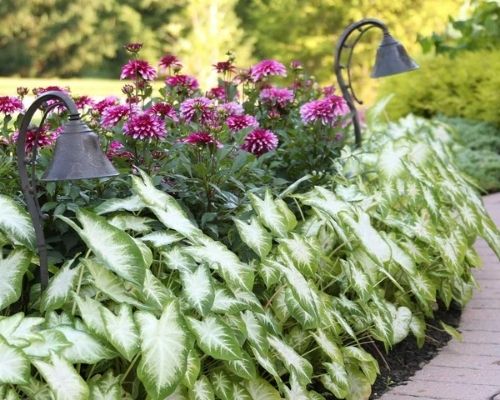Learn Why Watering Correctly is So Important
Anyone can pour water on a plant. But it takes time and experience to understand how plants use water and the many variables that come into play. These include the type of plant, its size, the soil texture, recent weather, sun exposure, time of day and time of year. In short, watering your garden shouldn't be a rote task. The amount of water a plant requires is constantly changing, so you need to be paying attention.
As the great American horticulturist Liberty Hyde Bailey wrote in 1917, "the watering of plants usually exhibits the skill, or the lack of it, of the gardener. It is a practice that cannot be well explained in print."
Said more simply, it takes in-the-garden experience to become a watering pro. You can get a jump start by following these 7 best practices:
1. Water Where the Roots Are
Focus the water at the soil level and keep applying it until the plant’s entire root ball is thoroughly soaked. Remember that the roots are probably just as wide as the plant and may be a foot or two deep.
2. Check the Soil Before Watering
The best moisture meter is at the end of your hand. When the soil surface looks dry, probe down a few inches to see if the soil is dry several inches down. If so, it’s time to water. If not, wait a day.

3. Water in the Morning
The best time to water your plants is in the morning. This way, if the leaves get wet, they have the entire day to dry out. It's much more difficult for plant diseases to get a foothold when the foliage is dry. If you can't water in the morning, evening is second best.
4. Water Slowly
If the soil surface is dry, water may puddle or run off and not be absorbed. The solution is to start slowly and gradually build up to a thorough soak. Once the top few inches are moist, the water will be absorbed more easily.
5. Make Every Drop Count
Use a watering wand, drip irrigation or soaker hoses to direct water right to the root zone. Watering early or late in the day minimizes moisture loss due to evaporation from the soil surface. Shielding plants from wind will also reduce moisture loss.

Plants need oxygen as much as they need water. For most plants, it’s best to let the soil surface dry out a bit between waterings. This is especially important with container plants. It’s always best to water deeply and less frequently.
7. Don’t Let Them Go Dry
In the heat of the day, plants sometimes wilt to conserve moisture, but they should perk up again when evening comes. If you allow the soil to get too dry, the fine, hair-like projections on the ends of the roots may be damaged. When plants have to regrow these root hairs, it saps energy that would otherwise be going to flower and fruit production.
8. Use Mulch to Conserve Moisture
Covering the soil with a thin layer of organic mulch such as compost, shredded leaves, shredded bark or pine needles, will help reduce evaporation and minimize runoff. If the mulch is more than an inch thick, it can work against you by preventing moisture from reaching the roots.
To learn more about caring for your garden, you may be interested in reading: How and Why to Fertilize Your Plants.


